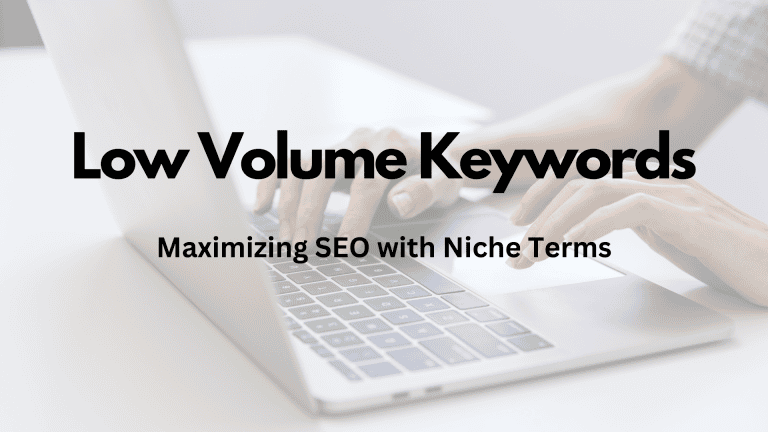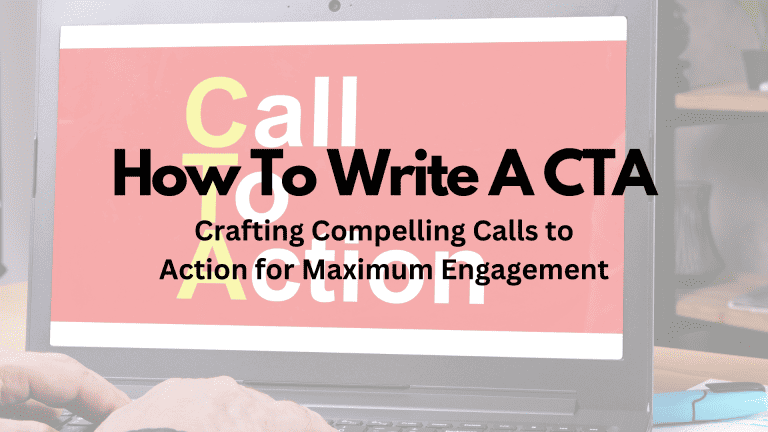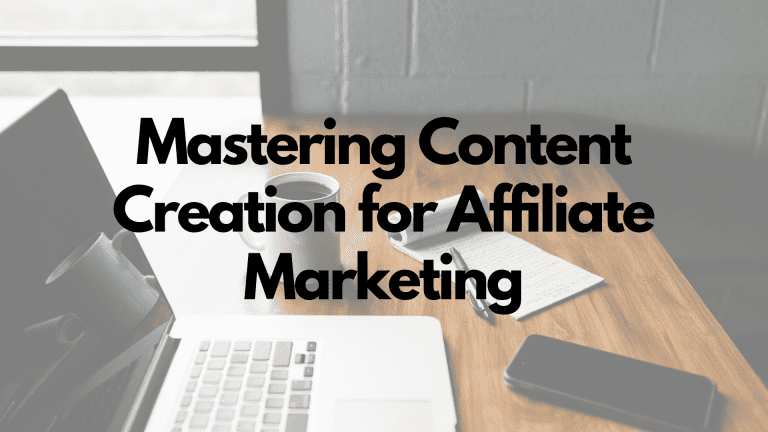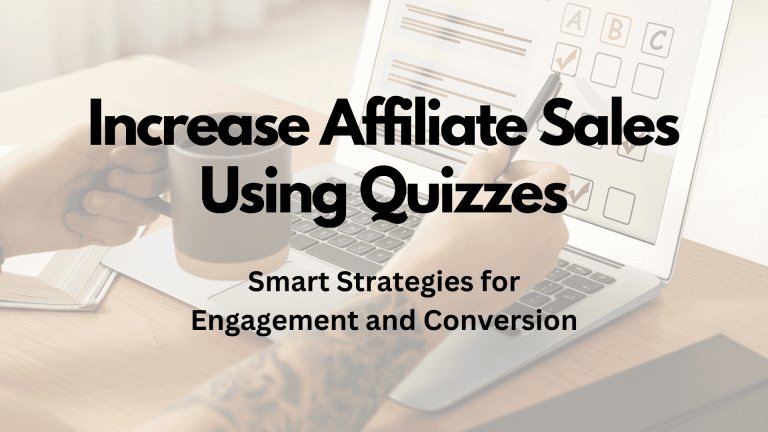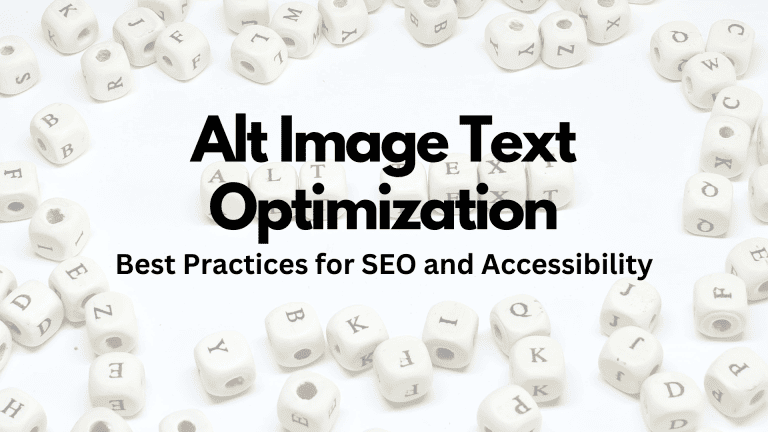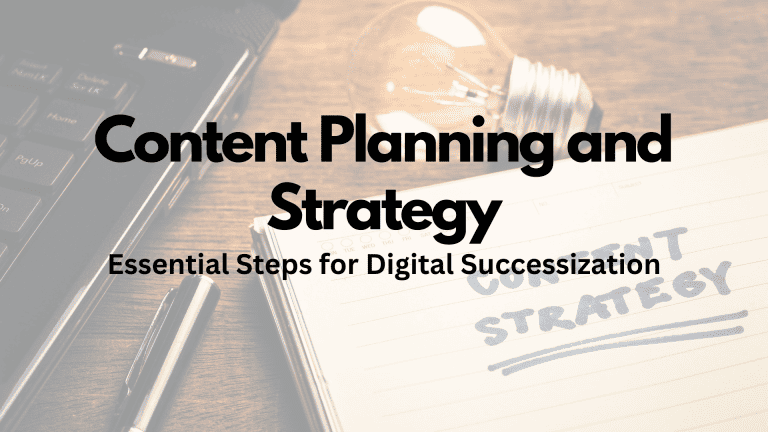
Content planning and strategy are essential components for developing a robust online presence.
Your content acts as a bridge between your brand and your audience, making it crucial for building relationships and establishing trust.
By thoughtfully planning your content, you stand to not only attract your target audience but also retain their attention consistently over time.

A well-crafted content strategy helps you define your goals and set clear objectives.
Understanding your audience's needs and preferences allows you to create content that resonates with them.
This strategic approach ensures that every piece of content you produce, whether an article, video, or social media post, aligns with your brand's voice and business goals.
Planning ahead saves you time and resources, allowing for a more efficient content creation process.
Organization is key; a content calendar is one of the tools you can use to schedule your posts effectively.
This systematic scheduling helps maintain a steady stream of content, keeping your audience engaged while also boosting your search engine visibility through consistent updates.
Understanding Content Strategy

Navigating the landscape of content creation requires a robust content strategy to establish authority and maximize the impact of your content across various platforms such as Facebook, Instagram, TikTok, and YouTube.
What Is Content Strategy?
A content strategy is a plan that defines how you create, publish, and manage content to meet your business objectives.
It involves a comprehensive approach that includes keyword research for SEO, identifying the right content mix, which may range from blog posts to videos, and developing a calendar to ensure consistent delivery across your chosen platforms.
Key Components of a Content Strategy:
- Content Creation: Crafting valuable content tailored to your niche.
- Distribution Channels: Selecting the appropriate social media platforms for your content.
- SEO: Integrating keywords and links to improve visibility and ranking.
- Metrics: Measuring the success of your content to inform future strategies.
Content Strategy vs. Content Marketing: What's the Difference?
While content strategy and content marketing are intertwined, they are distinct concepts.
Content strategy involves the governance of content— outlining the who, what, why, and how of your content, with an emphasis on aligning with your brand's goals and user needs.
On the other hand, content marketing focuses on the execution aspect— using content to build relationships with your audience, drive traffic, and generate leads.
Content Strategy vs. Content Marketing:
- Focus of Content Strategy: Blueprint for content creation, governance, and maintenance.
- Focus of Content Marketing: Tactics for using content to achieve marketing objectives.
Keep in mind that your content strategy should dictate your content marketing efforts, ensuring that every piece of content, whether it is a video on YouTube or a post on Instagram, serves a strategic purpose and contributes to establishing you as an authority in your field.
The Importance of Content Strategy

A robust content strategy aligns with your business and marketing goals, crafting a roadmap for building brand awareness and establishing trust with your audience.
Why Do You Need a Content Strategy?
When you invest time in developing a content strategy, you are essentially creating a blueprint that details how your content will help you meet your goals.
A thoughtfully prepared content plan ensures that every piece of content, from blog posts to social media updates, is crafted with a purpose and contributes to a cohesive brand narrative.
Identify Your Goals: Begin by outlining specific business and marketing goals.
Your content should serve as a pathway to meet these objectives, whether it's increasing web traffic, generating leads, or directly driving sales.
Understand Your Audience: To effectively communicate with potential customers, you need to develop a buyer persona.
This represents your ideal customer and provides insights into their preferences, behaviours, and pain points.
Tailor your content to resonate with this audience, guiding them seamlessly through the customer journey.
Formulate Your Content Plan: Your content plan is a strategic document that addresses what type of content will be published, when it will be posted, and on which platforms.
The plan should reflect your overarching mission and how you intend to converse with your audience at every touchpoint.
Developing Your Content Strategy

A robust content strategy aligns with your brand's goals and resonates with your audience. It is a roadmap to creating content that engages and educates.
Build a Clear Content Strategy
Your content plan is the foundation upon which your strategy is built. To construct a clear content strategy:
- Assess your resources: Assess the skills, tools, and budget at your disposal.
- Define your theme: Determine the central message that ties all your content together.
Table: Content Strategy Framework
| Pillar | Description | Example |
|---|---|---|
| Mission Statement | Defines the purpose of your content efforts. | “Educate young families on financial planning” |
| Key Themes | Central topics covered in your content. | Budgeting, Investing, Saving for Education |
| Content Formats | The forms your content will take. | Blog posts, eBooks, Videos |
| Publication Channels | Where your content will be distributed. | Website, Social Media, Email Newsletters |
| Assessment Metrics | How you'll measure success and make adjustments. | Engagement rates, Conversion rates |
Set Goals
Effective content strategy is goal-oriented. Your goals should be SMART: Specific, Measurable, Achievable, Relevant, and Time-Bound.
Examples of Goals:
- Increase website traffic by 20% in six months.
- Grow email subscriber list by 500 subscribers in three months.
List Items:
- Determine if your aim is to generate leads, increase sales, or boost brand awareness.
- Identify how content will move your audience through the buyer's journey.
Understand Your Audience
Audience research is crucial to ensuring your content resonates. Gather data on:
- Demographics: Age, location, language.
- Interests: Topics that fascinate your audience.
- Customer Journey: Buyer's journey stages—awareness, consideration, decision.
Italicize important aspects:
- Understand not only who your audience is, but also why they should care about your content.
- Tailor content that not only informs but also engages your audience at various touchpoints.
Crafting Your Content Template

Creating a content template streamlines your workflow, ensures consistency across posts, and helps maintain a high standard of quality. It is a key tool in your content strategy, particularly when managing a blog.
Create Your Template
Begin by outlining the elements every piece of your content should include. Your content template should act as a checklist to ensure completeness and uniformity:
- Title: Craft a title that captures the essence of the post.
- Introduction: Start with an engaging opening that previews the content.
- Headings: Break up the text with H2s and H3s based on content hierarchy.
- Body: Structure the main content in an organized manner.
- Conclusion: End with a summary or call to action.
- Keywords: Integrate SEO-friendly keywords throughout.
- Metadata: Include SEO metadata like meta descriptions and title tags.
- Images: Specify image placement and alt-text.
- Links: Identify sections for internal and external linking.
- Call-to-Action (CTA): Decide on the position for your CTA.
Use a content management system (CMS) to digitize and automate your template application, further simplifying the process.
For a Blog
Crafting your blog content template requires a focus on:
- Consistency: Standardize fonts, colours, and formatting.
- Content Format: Decide on the format types, such as listicles, how-tos, or interviews.
- Editorial Calendar: Tie your template to an editorial calendar for effective timing and topic management.
- Workflow: Define the content workflow stages–from planning, and drafting to publishing.
- Content Calendar: Plan the frequency of posts to maintain a steady stream of content.
- Type of Content: Identify whether the post is informational, promotional, or user-generated.
Topic Selection and Content Types
Find the Right Topics
To identify topics that resonate with your audience, begin with keyword research. Utilize tools to analyze search volume and relevance to your niche.
Focus on keywords with a substantial volume that aligns with your expertise and audience interests. Incorporate SEO best practices by targeting these keywords, which can boost your visibility on search engines like Google.
Regularly check Google Analytics to understand which of your content performs the best. This data provides insights into the topics your audience finds most engaging.
Align your new content ideas with these insights to enhance the chances of ranking higher in search results.
Consider the type of content that fits your chosen topics.
For instance, if your keyword analysis reveals a high interest in “how-to” guides in your niche, you might prioritize creating informative blog posts or tutorial videos.
Different types, such as blog posts, infographics, or videos, maybe more appealing for various content topics.
Platforms such as Facebook, Instagram, and YouTube cater to specific types of content.
Facebook and Instagram are ideal for short-form content and visual storytelling, while YouTube is the premier choice for long-form video content.
Select the type of content that not only serves the topic well but also aligns with the platform where your audience is most active.
Organizational Aspects of Content Strategy
Effective content strategy requires meticulous organization. Central to this is clear task assignment and the establishment of firm deadlines.
Assign Tasks (and Set Deadlines)
Map Out the Workflow: Start by creating a workflow in a spreadsheet that delineates each step of content creation, from idea generation to publishing.
Assign an owner to oversee the workflow, ensuring that all tasks are tracked and progress is visible to the entire content team.
Identify Roles: Specify individual roles such as writers, editors, SEO specialists, and social media managers.
Clearly outline expectations for each team member, linking them to specific tasks within the workflow.
Set Deadlines: Each task should have a clear deadline.
Use the spreadsheet to mark these dates, facilitating timely completion and allowing for buffer time before publishing.
Conduct Competitor Analysis: Have a team member dedicated to competitor analysis.
This informs your strategy and ensures your content remains competitive. Link outcomes of the analysis to your content plan.
Utilize SEO Best Practices: Assign someone to integrate SEO into every piece of content.
This includes identifying targeted keywords, ensuring appropriate use of hashtags, and optimizing link structure.
Track with KPIs: Define key performance indicators (KPIs) for each piece of content.
Your writers and content team should understand how KPIs relate to the overall objectives of the content, such as lead generation, engagement, or brand awareness.
Content Scheduling and Management
Effective content scheduling and management enable you to publish consistently and meet deadlines without sacrificing quality. By utilizing tools such as a content calendar or an editorial calendar, you can streamline your content planning process and improve efficiency.
Schedule in Advance
Creating a content calendar is essential in laying out all the pivotal milestones for your content strategy.
Utilize a calendar to plot deadlines for each piece of content and ensure that your content aligns with upcoming events, trends, and marketing goals.
- Use an Editorial Calendar
- Keep track of content topics, publication dates, and responsible parties.
- Allows for strategic thematic planning across different platforms.
- Plan Social Media Content
- A social media content calendar helps you prepare posts for the future, maintaining a consistent online presence.
- Align social media posts with broader marketing campaigns for cohesive messaging.
- Improve Efficiency
- Anticipate bottlenecks by planning and adjusting workload to prevent content delays.
- Streamline collaborative efforts by having a single reference point for all team members.
Remember, by scheduling your content tasks in advance, you free up valuable time for creativity and quality control instead of last-minute rushes to meet publication times.
Assessing Your Content's Performance
Evaluating the impact of your content is essential to understanding its effectiveness in achieving your marketing goals. By methodically measuring performance, you can identify areas for improvement and make data-driven decisions.
Measure the Results
To properly assess your content's performance, focus on key performance indicators (KPIs).
Utilize tools like Google Analytics to gain insights into how your content is performing.
This sophisticated platform can provide you with detailed metrics such as organic traffic, which is a significant indicator of your SEO success.
First, track your traffic to see how many visitors your content attracts.
Growth in traffic numbers often reflects an increase in brand awareness and the effectiveness of your content in reaching your target audience.
Make sure to differentiate between organic, referral, and direct traffic to fully understand the sources of your audience.
Next, examine leads. These are potential customers who have expressed interest in your product or service by taking an action, such as subscribing to a newsletter.
High-quality content geared towards lead generation will see a higher conversion rate from visitors to leads.
Conduct a content audit periodically to evaluate the relevance and performance of all content pieces.
Identify the most successful posts in terms of engagement and conversion rates. This will inform your strategy to produce more quality content that resonates with your audience.
Engagement metrics such as time on page, pages per session, and bounce rate offer valuable information about how compelling your visitors find your content.
Finally, assess customer retention through metrics like return visitor rate and subscription renewal rates.
Content that keeps customers coming back contributes to a sustainable business model by continually engaging your user base.
Your Comprehensive Content Plan
Crafting a content plan is a critical step in establishing a content strategy that aligns with your goals, engages your audience at every stage of their customer journey, and enhances your brand awareness.
Build Your First Content Plan
To forge your initial content plan, you must first define clear, actionable goals.
Are you looking to increase traffic to your website, bolster your social media presence, or generate more leads? Each goal should be specific, measurable, attainable, relevant, and time-bound (SMART).
Next, analyze your target audience and map out their customer journey.
Understanding the stages your audience goes through—from awareness to consideration to decision—will guide the type of content you create.
For instance, informational blog posts might cater to the awareness stage, while product comparisons fit the consideration stage.
Developing high-quality content is non-negotiable.
Your content should not only inform but also engage your audience. Impeccable research, compelling storytelling, and a strong brand voice are the hallmarks of content that stands out.
Consider search engine optimization (SEO) to ensure your content is discoverable.
Research relevant keywords and incorporate them into your content naturally. This will help your content rank higher on search engine results pages, thereby increasing visibility.
Leverage social platforms like Facebook and Instagram.
These are invaluable for improving brand awareness and engaging with your audience.
Tailor your content to the strengths of each platform—dynamic, shareable posts for Facebook and visually captivating images or stories for Instagram.
A content calendar is your best ally in organizing your plan.
It should detail what content is posted when and where. This foresight aids in maintaining a consistent posting schedule, which is crucial for audience retention and for keeping your campaign on track.
Effective Content Distribution
When crafting your content distribution strategy, you should consider a variety of channels to ensure your content reaches your target audience effectively. Here's how you can leverage different platforms and content types:
Social Media Platforms: Utilize popular social media platforms to share your content. Tailor your approach for each:
- Instagram & Facebook: Share high-quality images, short videos, and use stories for quick updates. Interactive features like polls and questions can boost engagement.
- YouTube: Create detailed, informative, or entertaining video content demonstrating your expertise or showcasing your product.
- TikTok: Use creative and trendy short-form videos that align with your brand’s persona to reach a younger demographic.
- LinkedIn: Share professional content, including articles, company news, and case studies to connect with industry peers and potential B2B clients.
E-mail Newsletters: Send out periodic email newsletters to keep your subscribers informed. Include images, and links to your latest blog posts, video content, or upcoming events.
Content Types:
- Case Studies: Publish them across LinkedIn and within your email newsletters to establish credibility.
- Videos: Share on YouTube, Facebook, or TikTok, depending on your target audience's preferences.
- Podcasts: Promote through your social media channels and include a direct link in your email newsletters.
- Images: Distribute across Instagram, Facebook, and LinkedIn to visually engage your audience.
Remember to track the performance of your content across these various channels, using data to fine-tune your strategy and improve reach and effectiveness.
Implementing a systematic approach to content distribution will ensure your valuable content does not go unnoticed.
Frequently Asked Questions
In this section, you'll find concise answers to common questions about creating and implementing a content marketing strategy, as well as clarifications on the tools and templates that can streamline your content planning.
How can I develop an effective content marketing strategy?
To develop an effective content marketing strategy, start by defining your goals and understanding your audience's needs.
Create a content roadmap that aligns with your marketing objectives and includes a variety of content formats to engage your audience across different platforms.
What tools are essential for efficient content planning?
Essential tools for content planning include content management systems (CMS) like WordPress, editorial calendar software such as CoSchedule or Trello, and analytics tools like Google Analytics to track and measure performance.
Can you suggest a template for content planning and strategy?
A basic template for content planning and strategy should include columns for content topics, target audiences, keywords, content formats, distribution channels, and performance metrics.
This enables you to organize and track each component of your content strategy effectively.
What are some key differences between content planning and strategy?
Content planning involves the tactical aspects of managing your content, such as scheduling and producing individual pieces.
Content strategy, on the other hand, refers to the overarching vision and long-term goals that guide which content you create and how it's used to engage your audience and achieve business objectives.
What are the core components of a successful content strategy?
The core components of a successful content strategy include an understanding of your target audience, clear content objectives, a distinct brand voice, a plan for content creation and distribution, and methods for tracking and analyzing content performance.
Could you provide an example of a content strategy in digital marketing?
In digital marketing, a content strategy might involve creating blog posts to drive traffic through SEO. Sharing infographics on social media can help increase engagement.
Sending out newsletters is another method to nurture leads. Creating video content can also help to build brand awareness. All of these are designed to work together to move users through a conversion funnel.
Share Your Journey, Learn More, and Thrive
I would love to hear about your experiences, challenges, and successes in the realm of affiliate marketing.
Share your thoughts, questions, or stories in the comments section below.
Let's build a community of aspiring and experienced affiliate marketers, supporting one another on this exciting journey.
For more valuable insights, tips, and guidance on affiliate marketing, subscribe to our newsletter.
Stay updated with the latest trends, tools, and strategies that can empower you in your pursuit of affiliate marketing success.

